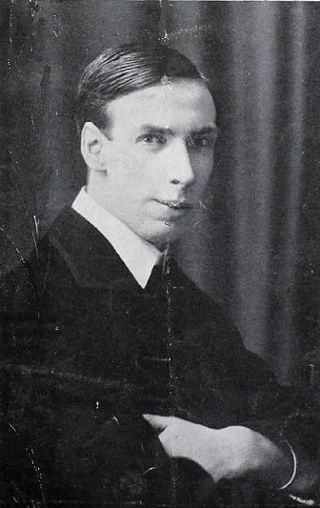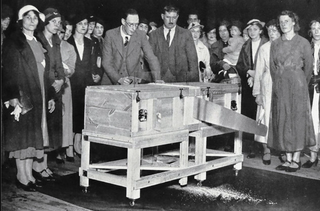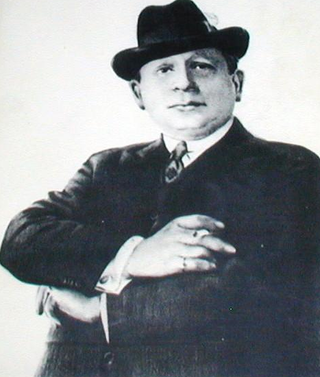
Intellectual property (IP) is a category of property that includes intangible creations of the human intellect. There are many types of intellectual property, and some countries recognize more than others. The best-known types are patents, copyrights, trademarks, and trade secrets. The modern concept of intellectual property developed in England in the 17th and 18th centuries. The term "intellectual property" began to be used in the 19th century, though it was not until the late 20th century that intellectual property became commonplace in most of the world's legal systems.

Trade secrets are a type of intellectual property that includes formulas, practices, processes, designs, instruments, patterns, or compilations of information that have inherent economic value because they are not generally known or readily ascertainable by others, and which the owner takes reasonable measures to keep secret. Intellectual property law gives the owner of a trade secret the right to restrict others from disclosing it.

P. T. Selbit (1881–1938) was an English magician, inventor and writer who is credited with being the first person to perform the illusion of sawing a woman in half. Among magicians he was known for his inventiveness and entrepreneurial instinct and he is credited with creating a long list of successful stage illusions.

Burling Hull was an inventive magician, self-styled "the Edison of magic," specializing in mentalism and sleight of hand effects. During the greater part of his life he lived in DeLand, Florida. His aliases and stage names included: "Volta the Great", "The Man with the Radar Mind", "The White Wizard," and "Gideon ('Gid') Dayn."

Sawing a woman in half is a generic name for a number of stage magic tricks in which a person is apparently cut or divided into two or more pieces.

Metamorphosis is the name of a stage illusion invented by John Nevil Maskelyne, but most often associated with famous escape artist Harry Houdini and performed to some renown by The Pendragons, among others. It is also known amongst magicians as the Substitution Trunk.
Intellectual property rights (IPRs) have been acknowledged and protected in China since 1980. China has acceded to the major international conventions on protection of rights to intellectual property. Domestically, protection of intellectual property law has also been established by government legislation, administrative regulations, and decrees in the areas of trademark, copyright, and patent.
Exposure in magic refers to the practice of revealing the methods of magic tricks.
Val Valentino is an American magician. Valentino is best known for starring in the television show Breaking the Magician's Code: Magic's Biggest Secrets Finally Revealed, where he exposes the methods behind numerous classic magic tricks and illusions on the Fox network. In the specials, he used the stage name the Masked Magician and concealed his true identity by wearing a mask with a squid like design, being aware of the stigma amongst the magic community with publicly exposing tricks. As the finale to the final special, Valentino revealed his identity as the Masked Magician, garnering some notoriety amongst the magic community, and instigating several lawsuits.
The multinational technology corporation Apple Inc. has been a participant in various legal proceedings and claims since it began operation and, like its competitors and peers, engages in litigation in its normal course of business for a variety of reasons. In particular, Apple is known for and promotes itself as actively and aggressively enforcing its intellectual property interests. From the 1980s to the present, Apple has been plaintiff or defendant in civil actions in the United States and other countries. Some of these actions have determined significant case law for the information technology industry and many have captured the attention of the public and media. Apple's litigation generally involves intellectual property disputes, but the company has also been a party in lawsuits that include antitrust claims, consumer actions, commercial unfair trade practice suits, defamation claims, and corporate espionage, among other matters.
The table of death is a predicament escape that may be regarded as a magic trick or an act of escapology.

Horace Goldin was a stage magician who was noted for his rapid presentation style and who achieved international fame with his versions of the sawing a woman in half illusion.

Herbert Lawrence Becker is an American former magician, escapologist, stunt performer, author, and businessman. As a magician, Becker performed as Kardeen.

The following outline is provided as an overview of and topical guide to intellectual property:
The laws of Thailand are based on the civil law, but have been influenced by common law.

Iran is a member of the WIPO since 2001 and has acceded to several WIPO intellectual property treaties. Iran joined the Convention for the Protection of Industrial Property in 1959. In December 2003 Iran became a party to the Madrid Agreement and the Madrid Protocol for the International Registration of Marks. In 2005 Iran joined the Lisbon Agreement for the Protection of Appellations of Origin and their International Registration, which ensures the protection of geographical names associated with products. As at February 2008 Iran had yet to accede to The Hague Agreement for the Protection of Industrial Designs.

Magic, which encompasses the subgenres of illusion, stage magic, and close-up magic, among others, is a performing art in which audiences are entertained by tricks, effects, or illusions of seemingly impossible feats, using natural means. It is to be distinguished from paranormal magic which are effects claimed to be created through supernatural means. It is one of the oldest performing arts in the world.
The Inexhaustible Bottle is a classic magic trick performed by stage magicians. It dates to the 17th century and has since inspired many variations; well known examples include Any Drink Called For, The Bar Act, Satan's Barman, the Assassin's Teapot and Think-a-Drink. During the temperance movement it became The Obliging Tea Kettle, and the modern Magic Tea Kettle remains a common prop available at most magic stores. A slight variation is the Magic Funnel. Today, the trick is normally performed for children, although some stand-up shows retain a variation.

A levitation illusion is one in which a magician appears to defy gravity by making an object or person float in the air. The subject may appear to levitate unassisted, or it may be performed with the aid of another object in which case it is termed a "suspension".
The protection of intellectual property (IP) of video games through copyright, patents, and trademarks, shares similar issues with the copyrightability of software as a relatively new area of IP law. The video game industry itself is built on the nature of reusing game concepts from prior games to create new gameplay styles but bounded by illegally direct cloning of existing games, and has made defining intellectual property protections difficult since it is not a fixed medium.









